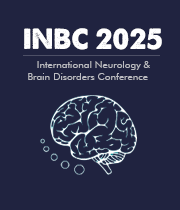Title : Seizures in preterm infants with severe intraventricular hemorrhage: National trends, risk factors, and mortality outcomes (2003–2020)
Abstract:
Background: Neonatal seizures are a serious complication in preterm infants with severe intraventricular hemorrhage (IVH), yet the national prevalence, trends, and outcomes associated with these seizures remain under-characterized. This study aims to assess the burden, risk factors, and mortality of seizures among extremely preterm infants with severe IVH using a large, population-level dataset.
Methods: We conducted a retrospective cohort study of 513,773 infants born at ≤28 weeks’ gestation using the National Inpatient Sample (2003–2020). Severe IVH (grades 3–4) and seizures were identified using ICD-9 and ICD-10 codes. We evaluated seizure prevalence and trends over time using quasi-Poisson regression. Logistic regression was used to determine adjusted odds ratios (aORs) for seizure risk and mortality. Multivariable models identified demographic, maternal, and neonatal factors associated with outcomes.
Results: Severe IVH was diagnosed in 6.61% of infants (n=33,984), and seizures in 2.11% (n=10,850). Seizure prevalence decreased significantly by 1.94% per year (p=0.0049), while IVH prevalence remained stable. Infants with severe IVH had markedly higher odds of seizures (aOR 7.3, 95% CI 6.9–7.7, p<0.0001). The adjusted mortality rate among infants with both severe IVH and seizures was 46%, compared to 38% in those without seizures (aOR 1.4, 95% CI 1.3–1.5, p<0.0001). Acute renal failure, pulmonary hemorrhage, and placental abruption were the strongest predictors of mortality in this high-risk group. African American race, cesarean delivery, and singleton status were associated with reduced mortality.
Conclusions: Seizures significantly worsen survival in preterm infants with severe IVH. Despite improvements in seizure rates over time, severe IVH prevalence and associated mortality remain high. These findings underscore the need for early seizure detection and tailored neuroprotective strategies to mitigate long-term morbidity and mortality in extremely preterm infants.
Keywords: intraventricular hemorrhage, neonatal seizures, preterm infants, EEG, mortality, neurodevelopment, national database, HCUP, neurocritical care



